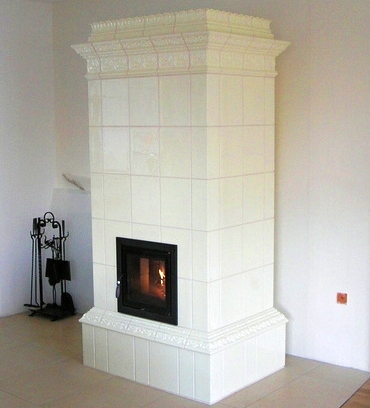 HEAT STORAGE OVENS
HEAT STORAGE OVENS
Heat accumulating stoves include normal tiled stoves or those built from ready-made, prefabricated elements. Such a furnace is a heat accumulator, and smoking is done once or twice a day during frosty days. The task of the relatively large mass of the furnace is to accumulate so much heat, that the heat released slowly suffices to compensate for the heat loss in the room, in the periods between individual firings in the furnace. However, accumulation should be used correctly technically.
A characteristic feature of the housing stoves built so far was such a location of the channels, that the exhaust gases travel the longest distance from. hearth to the outlet to the chimney. It was believed, that the longer the gases are in the furnace, the better they will heat the stove. As experience has shown, these were misconceptions, because the larger internal surfaces of the furnace were hotter than the external surfaces, and the connection of the furnace channels to the flue in the upper part of the furnace resulted in the outflow of the higher temperature flue gases, and therefore large losses.
The more channels there are in the furnace, in which the exhaust gases rise once, and then fall downwards, the more these gases have a cycle of returns, kinks and inhibitions, reducing the speed of their flow. Accordingly, such furnaces require more thrust, and hence very high, reaching 10 meters of chimneys. ,
In a multi-channel oven, in each channel further away from the hearth, the stove heats up less and less, this affects not only bad heating of the room, but also uneven expansion of the outer walls of the stove and often cracking of joints between the tiles, and even the tiles themselves.
Used in modern furnaces in the "root" furnace channel (cross partitions) cause, that the combustion process is better, moreover, these attachments accumulate more heat and lower the temperature of the gases at the outlet to the chimney. Especially in ductless furnaces, which have a combustion chamber above the hearth, the remaining unburned coal particles burn thoroughly in it.